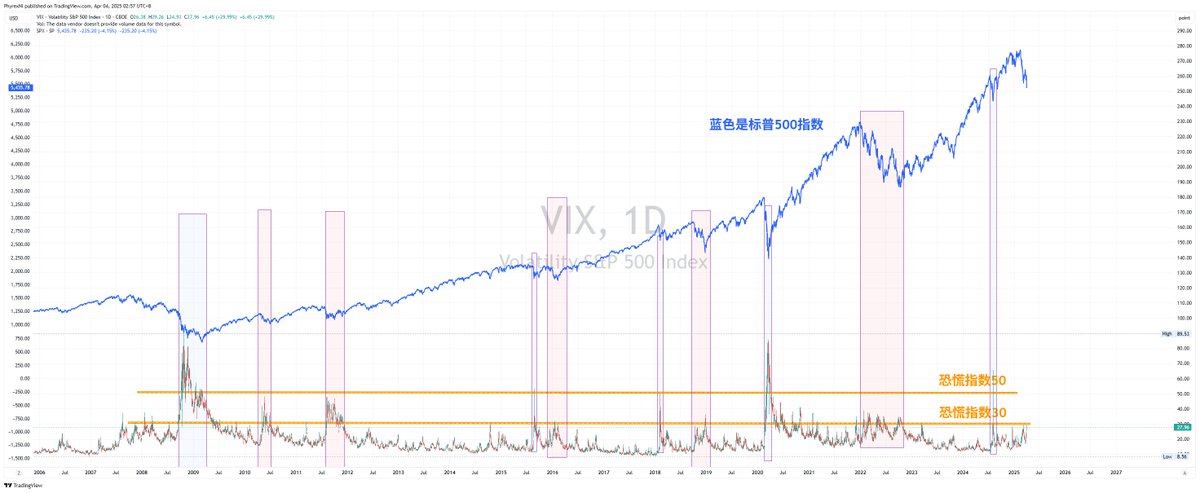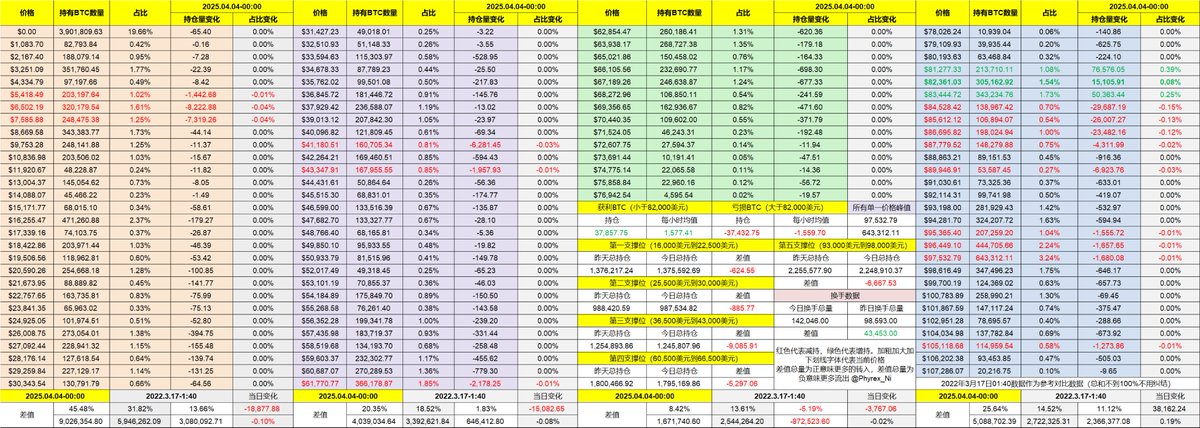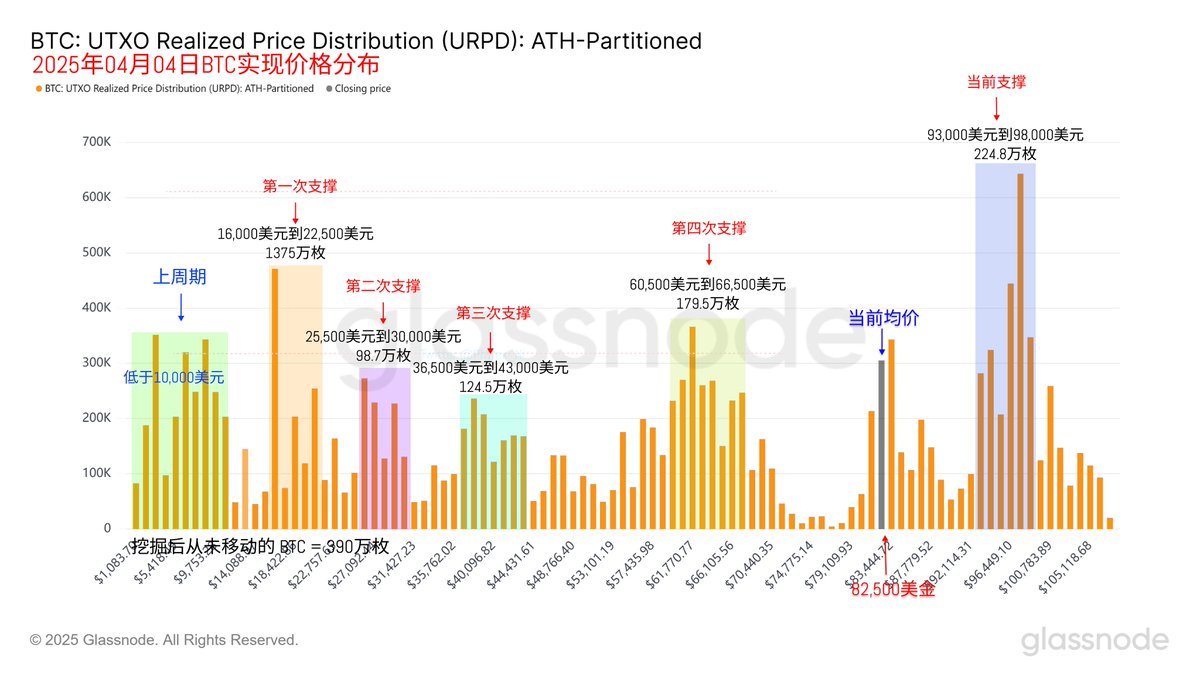Today's homework is still quite easy to write, just an extension of yesterday's tariff event. The market has not yet escaped the panic mood, and I wouldn't be surprised if the VIX data exceeds 30 today. In the past month, it has hovered around 30 three times, and 30 might just be data from a correction period. Typically, a level above 50 is considered the beginning of a recession. Generally speaking, if we do not enter a recession, a level above 30 is a good opportunity to buy the dip, while if we enter a recession, buying after 50 is also a good opportunity.
So far, the Nasdaq has fallen more than 4.5%, and the S&P has dropped over 4%, but the downward trend has not eased. This is mainly because the tariffs caught too many people off guard. One could say that Trump's tariff policy has even imposed a 10% tariff on Heard Island and McDonald Islands, which have only penguins and no people; even penguins passing by have to shed tears and pay two fish.
I am not qualified to comment on tariffs, and it wouldn't matter even if I did. Looking at the results, this is not the final tariff implementation plan, but rather the "maximum effort" plan. I even suspect that this plan is just for show and has no possibility of execution, yet the outcome will still make the risk market pay the price before April 9.
This tariff issue is very similar to the FDUSD situation. Trump made a loud announcement, and then the U.S. stock market started to decline. On the 9th, Trump said this plan would not be executed, and then the stock market began to rise again. But who can the investors who sold at a loss go to for an explanation? Should they go to Trump? To the U.S. government? To the White House? Or to the Nasdaq or the Chicago Exchange? They can't find anyone; they can only accept it. At least with FDUSD, there is a chance to sue, but there is none for the U.S. stock market.
This is the helplessness of the risk market driven by policy events. But one must know that this is not even the difficult mode, because there are still macro and economic-driven events to come, which are even more critical. The reason April is said to be challenging is that many things are unpredictable, especially with Trump as the biggest uncertainty factor.
I think Trump chose a good time to announce the tariffs. Yesterday, he revealed the big weapon after the U.S. stock market closed, leading to a drop today. Tomorrow, there will be non-farm payroll data. If this data is good, it may ease market anxiety. The White House has already indicated that this tariff will be executed in the "worst-case scenario," so it can be assumed that as long as a recession is not expected, the bottom should be reached in the next couple of days. Of course, when GDP is announced in the middle of the month, this logic will no longer hold.
What if tomorrow's non-farm data is bad? Then it will continue to drop; what else can be done? The market has to digest it itself. Once it has digested enough to price in the tariffs, that will be the bottom (excluding recession factors). However, for cryptocurrencies, it may not be so friendly, because the U.S. stock market is closed on weekends, giving stock investors two days to ease their panic, but cryptocurrencies do not have this buffer.
From Bitcoin's data, today's drop has brought panic, and the panic itself is not due to the price drop but because of the tariffs. According to estimates from U.S. economists, if this tariff plan is implemented, U.S. inflation levels will return to 5%, which means either an economic recession or the Federal Reserve will maintain high interest rates. High interest rates will increase the likelihood of an economic recession, so the probability of recession will rise sharply, which is the main reason for the panic.
Therefore, it is not difficult to see from the data that although most of the turnover comes from short-term investors, there is also a trend of turnover among long-term investors. Although it is less, it still represents that some long-term investors are choosing to exit due to uncertainty about the future, and additionally, many investors who bought the dip yesterday are cutting their losses.
In fact, compared to the U.S. stock market, Bitcoin is still lucky. Looking at today's drop in $BTC, it remains relatively stable; it hasn't broken below the previous low of $77,000 for a long time, while the U.S. stock market has already dropped to levels seen in August 2024. This indicates that BTC's stability is still quite high.
Of course, this does not rule out the possibility that cryptocurrencies have not yet been liquidated. Let's wait and see, but I still have certain expectations for BTC's stability. After all, from the data, the largest concentration of chips between $93,000 and $98,000 has not shown signs of panic.
I hope tomorrow's non-farm data can improve investor sentiment.
This post is sponsored by @ApeXProtocolCN | Dex With ApeX



免责声明:本文章仅代表作者个人观点,不代表本平台的立场和观点。本文章仅供信息分享,不构成对任何人的任何投资建议。用户与作者之间的任何争议,与本平台无关。如网页中刊载的文章或图片涉及侵权,请提供相关的权利证明和身份证明发送邮件到support@aicoin.com,本平台相关工作人员将会进行核查。




